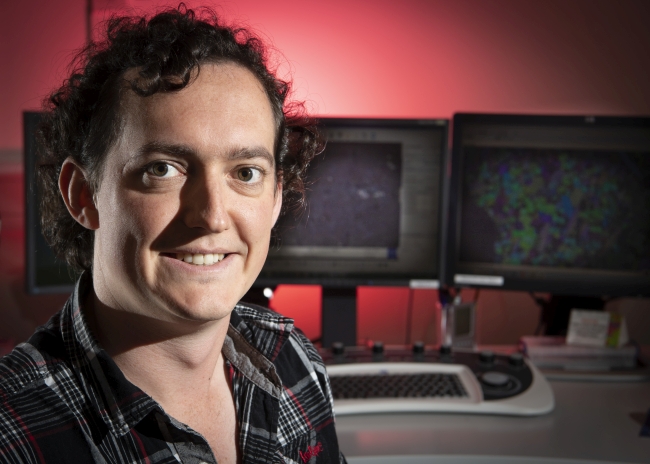SNAP decision will establish UofG as cutting-edge nano-analysis hub
Published: 31 March 2025
A major new grant will help to establish the University of Glasgow as one of the UK’s leaders in atom-by-atom analysis of materials which could support human habitations on the Moon and beyond.
A major new grant will help to establish the University of Glasgow as one of the UK’s leaders in atom-by-atom analysis of materials which could support human habitations on the Moon and beyond.
UKRI’s Engineering and Physical Sciences Research Council (EPSRC) has provided the University with £5.3m in new funding to support the establishment of an on-campus atom probe tomography (APT) facility.
The new facility, which will be called the Space Nanomaterials Atom Probe, or SNAP, will be the first of its kind in Scotland and one of just six in the UK. It will be the UK’s only facility to offer access to next-generation atom probe equipment and will be the only atom probe worldwide to specialise in space science challenges.
Atom probe tomography is a uniquely powerful analysis tool which allows researchers to examine the composition of materials down to the atomic level.
It uses an ultra-precise laser to shear off individual atoms, which are then pulled into a detector and analysed for information about both their chemical composition and their original position in the material. The data collected by the process produces a highly-detailed 3D atomic model of the original sample.
The SNAP facility will help scientists to see in exquisite detail how materials developed to withstand the rigours of future space missions react to long-term exposure to the vacuum, along with extreme changes in temperature, and exposure to harsh radiation.
The versatility of the atom probe tomography equipment makes it ideally placed to analyse a wide range of materials. Once the SNAP facility opens in 2028, it will also help to provide insights into the composition of materials which will enable advanced new devices for the quantum, semiconductor and energy sectors.

Dr Luke Daly
Dr Luke Daly, of the University of Glasgow’s School of Geographical & Earth Sciences, led the bid for funding and will be project lead for the installation of SNAP. Researchers from the University of Oxford and the Scottish Universities Environmental Research Centre (SUERC) will co-lead the project.
He said: “Atom probe tomography provides unique data that's unobtainable in any other way, so we’re delighted to have received this funding from EPSRC to set up a facility that will provide services right at the cutting edge of atomic characterisation.
“The UK’s booming space sector will benefit from access to SNAP, which will provide new insights into how materials are affected by space weathering. When satellites and other space infrastructure are exposed to radiation, solar wind, and cosmic rays in space, they can fail. By visualising this damage at the atomic scale, we can develop new materials that are more resilient to these challenging conditions.”
Dr Daly, a planetary science researcher, has previously used atom probe tomography techniques to analyse fragments of ancient asteroid samples brought to Earth by space missions, helping to unravel the mystery of the origins of the Earth’s water.

A diagram showing atom probe tomography analysis of the effects of space weathering on the asteroid Itokawa
The University of Oxford’s Dr Paul Bagot, who is co-investigator on the project, said: “I’m delighted to be part of the team bringing the first atom probe system to Scotland. This instrument will not only advance cutting-edge space-related research at Glasgow, but it will also be closely integrated within the growing UK APT community - SNAP will boost the opportunities available to researchers in the UK interested in the potential of APT, and our team will ensure current and future generations of scientists utilise this important new acquisition.”
Professor Eric Yeatman, Vice Principal and Head of the College of Science & Engineering, said: “We’re grateful to EPSRC for helping us to establish SNAP through a funding bid which was overseen by my predecessor as Head of College, Professor Dame Muffy Calder. SNAP is the newest addition to the University of Glasgow’s expanding suite of advanced analysis, characterisation and fabrication facilities. It will help further establish the University as a one-stop shop for cutting-edge materials development and testing, enabling characterisation from centimetre to atomic scales.”
Professor Dame Muffy Calder of the School of Computing Science said: “It’s a testament to the University’s breadth and depth of expertise across a wide range of disciplines that we’re able to establish an atom probe tomography facility here in Glasgow. SNAP will help enable breakthrough developments not just for our space scientists, engineers, geologists and chemists but researchers working across the UK and beyond.”
First published: 31 March 2025

